-
Content count
408 -
Joined
-
Last visited
-
Days Won
1
Posts posted by gr33ntea
-
-
Hello i am looking for Hylocereus polyrhizus cuttings. One that produces Dragon Fruit with red flesh and is self pollinating
Will pay with paypal or on pickup if you are in Melbourne CBD
Thanks for your time.-
 1
1
-
-
Found this gem
"Varieties of pink dragon fruit that do not require cross-pollination and are suitable for home gardens include American Beauty (Hylocerus guatemalensis), which has pink skin with light green scales and flavorful, dark pink fruit. Hylocerus undatus varieties include Cosmic Charlie, which tastes like a grape crossed with a kiwi fruit; Dark Star, which has a subtle grape flavor; and Halleys Comet (H. undatus x H. polyrhizus), which has deep pink, sweet flesh. Purple Haze (H. undatus) is another dragon fruit that tastes like grape mixed with kiwi."
Read more : http://www.ehow.com/info_8004855_varieties-selfpollinating-dragon-fruit.html-
 1
1
-
-
Hylocereus spp are probably quite adaptable.
I live in a semi arid climate in the tropics and I get quite a few H. Polyrhizus flowers because it is not self fertile I do not get fruits yet.
Oh shit.... so H. Polyrhizus is not self fertile?
-
Ok From what i have gathered after reading the information you guys posted
Hylocereus Megalanthus or Selenecereus Megalanthus
Produces yellow dragon fruit with white flesh. Very Very SweetThis variety is the only one known from the genus Selenicereus.
It differs from the Hylocereus in color, harvesting time, and this fruit has thorns that occur on the fruit itself. The fruit are small to medium usually weighing 0.23-0.34 kgs. The fruit ripen from late November to February, and it is certainly among the sweetest and tastiest of all the dragon fruit. This variety is self pollinating, and it will set fruit on its own.
---------------------------------------------------------------------------------------------------------------------------------------------------------------------------------------------------------------------------------------
Hylocereus polyrhizusProduces pink dragon fruit with red flesh. Very Sweet
The taste of the red flesh variety is sweeter than white flesh and the after taste is great as well.
Apparently it has more nutrients in it than white flesh.
If you eat a lot of this fruit your urine and stools will be red The color comes from natural pigments known as hylocerenin and isohylocerenin and is also known to have natural florescent property.
---------------------------------------------------------------------------------------------------------------------------------------------------------------------------------------------------------------------------------------
Hylocereus UndatusProduces pink dragon fruit with white flesh. Sweet
Apparently not that tasty, some people bitch about it and say it can be bitter and only has a vague melon taste. Most people say it is yummy but the red flesh taste better.
So now my question is what king of fruit does Selenecereus grandifloros produce?
---------------------------------------------------------------------------------------------------------------------------------------------------------------------------------------------------------------------------------------
Hylocereus Grandiflorus (Maybe this is the same as Selenecereus Megalanthus ^ )
Large-flowered Cactus
"Grandiflorus tends to be smaller, thinner stemmed & often slightly pricklier"
"The fruit are smaller than the average hylo fruit but IMO are much better flavor & of good texture."
" It does not seem to get as woody as many Hylo's but it is a much smaller plant"
- Shortly
---------------------------------------------------------------------------------------------------------------------------------------------------------------------------------------------------------------------------------------
The names get interchanged a lot. The plant itself are very similar to each other, vigorous growers, small spines...Hylocereus undatus : there are hundreds of different clones around with new ones being selected from seedlings every year so unless you have a variety name there is no way of saying exactly what the character of each plant would be sight unseen as they are all slightly different.
So now my question is: Is Hylocereus Undatus and Hylocereus polyrhizus self pollinating?
I am slowly coming to the conclusion that i should get Hylocereus polyrhizus. Fruit is good, plant grows bigger and yields more than the yellow skin white flesh dragonfruit producing variety. -
Hello everyone, i have recently been interested in Pitaya's from the Hylocereus family
I have done some lurking and from what i have gathered in the order least tastiest to most tastiest they are
1. red fruit with white flesh - Good (from hylocereus Undatus)
2. red fruit with red/pink flesh - Very Good (from hylocereus Undatus)
3. yellow fruit with white flesh - Very Very good (from hylocereus grandiflorus)
Now i am wondering what are the differences in the actual plant between these Hylocereus cacti?
These are specifically what i have been looking for the past hour
Are there any differences with the Undatus plants that produce the two different type of fruit?
Does grandiflorus branches grow wider and bigger?
Does undatus produce fruit with no glochids on it while another variety of hylocereus undatus does?
Does grandiflorus have bigger spikes? Is it woodier?
Does undatus produce more fruit?
i have found out that grandiflorus produces bigger flowers and bigger fruits
I am very curious what the difference are with the actual plant,? I am looking for a Hylocereus that i can get fruit from as well as maybe use as grafting stock.
Thanks for your time and any help.-
 2
2
-
-
Rooted plant, or one that is grafted on a columnar cacti or something.
-
Lophophora caespitosa would be particularly appreciated.
Will pay $
Name price.
I live in Victoria, Australia. -
These the photos?
20140721_152348_zps934dac97.jpg
20140721_152432_zps5b203413.jpg
>Click on 'More Reply Options' down near the bottom left hand corner of the reply box
>At the bottom of the new page it'll say 'Attach Files'
>Choose files and upload
>Add to the post by clicking 'Add to Post' button!
Sabry: It's on the bottom right!! I now got glochids in my dick cause of your false instructions. Reported.
Wert: Are these the cacti? ^
-
 1
1
-
-
So hard to germinate
Calea Zacatechichi
edit: Let us know how you germinated it if you have a surprisingly high success rate-
 1
1
-
-
My pereskiopsis had caterpillar damage so i poured tomato dust on them,
Caterpillar been munching on top, also the white stains on it are from sulphur anti fungal i sprayed a while back
Some kind of red rust? Why does it keep coming back
Something has been making holes in my leaves
More red rust.Does anyone know what it is? Or how to fix the problem?
I live in Melbourne, at the moment it is cold, wet and gloomy.
I have sulphur dust, sulphur that you mix with water to make antifungal solution and i have tomato dust at home, would these help? -
Noob question, i keep seeing Psycho0 posted here, is that someone who made an interesting strain of seedlings and named it after themselves?
-
I put them in a greenhouse outside, the loph is in coarse sand, I do have a heat pad the ones used for reptiles, but it doesn't really give off that much heat maybe if i gave it better insulation.
i also did some grafts, hopefully they will survive in this temperature (i put them in greenhouse too). I am not worrying about humidity and i wrapped the graft with glad wrap.Philocacti: I dont understand how you grafted it, did you plant it with stock and scion?
-
It is pretty cold in Melbourne atm, 16 degrees Delicious at the moment. I got a degrafted loph. I put it in dry sand and in a greenhouse. It is not humid and i pour tomato dust (miticide, fungicide) on it. The loph is squishy, it has been 4 weeks now. There is no rot on the loph, when does it root? Should i just store it in a cupboard instead of the sun?
-
Absolutely agree. Removing Pups for backup is absolutely necessary. Chances are you will lose the Plant and by doing this, you minimize the risk.
Ok i will seperate the pups, atleast i will have lots
Tomato dust has sulfur and insecticide, it works well for your situation.
It's fairly cheap too. Woolworths has it if you can't get to a hardware store.
Ok i will buy some
Hah man your cacti like rot
At least the pups will survive... maybe
fuck you. lol.
----------------------------------------------------------------------------------------------------------------------------------------------------------------------------------------------------------------------------------------
Plant was indoors, no idea how it got spider mites, definitely from the soil. I will salvage the pup, they should be a good size. How exactly do i kill spider mites, i got some mancozeb + sulphur fungicide
Interesting thing i learn today
I was messing around with one of the spider mites i caught and i tried crushing it with my finger, motherfu**er didn't get squished. SO while i was doing some research i heard these little critters develop resistance to the poisons used against them, so apparently if you use too much of some insecticide/fungicide the bitches will out-evolve the poison. Fuck you Darwin and your natural selection.
-
 1
1
-
-
Hi EG thanks for the information and tips
This is what it looked liked when i scooped out most of the rotI believe the mites came first than the rot
It is still attached to the graft, i think i will make some more room to air it out
Does the sulfur also kill the mites? I will see if my local bunnings has any insecticide
Edit: I am certain it is not red rust rot -
I killed all the spider mites with isopropyl alcohol spray, now i need to carve up the rot, how bad is it? Can i apply sulfur powder and just let it do its job or do i have to carve out more of the rot?
Some bits are still a bit squishy.
In case i have some spider mites present, how do i kill them? Should i clean the soil as well?
I have quarantined the plant and pot -
Count me, sending PM
-
Orange rot. A fungus! Potentionally fatal! sulfur,or even better a fungicide.
Is sulfur not a fungicide though? I have powdered sulfur at home, if i ever get fungus should i use sulfur powder or liquid fungicide spray
-
 1
1
-
-
Yes it has definitely been more than a month, i would say almost a year. Should i let it be or graft it?
The one on the left looks a bit dead already so maybe i should graft it -
Dry soil with inorganic sand. Placed in a warm dry indoor area with moderate sunlight
Thanks for the help guys-
 3
3
-
-
I think i may have possible albinos as well
-
Do you know what the rootstock was? It looks like a Trichocereus grafted onto Pereskiopsis? Is the spiny stock still alive? If so, you can root it easily, the stock will provide roots to the scions, and the Pere remnant will just die and go woody and shouldn't be a problem.
Put it in dry rooting material, free draining soil, perlite, clay granules or a mix, and leave it in indirect light in a warm place. Roots shouldn't take long, carefully take the plant out of the soil and check for them every 2 weeks.
Are you telling me it was a pereskiopsis grafted onto a trichocereus and than had a loph grafted onto it? sounds awesome.
You can definitely root it as is, and the stock will probably root first, then the scion in time. Is it a loph grafted to a columnar-type grafted to pereskiopsis? Doesn't really matter, but interesting. Nice plant!
I like to fill the desired pot with soil mix, then put a layer of inorganic top-dressing on top of that, then set the plant on top and situate into the top layer.
Keep it in a hot area and resist checking for roots as much as possible, and eventually the roots will pop out and find their way to the soil below. Do not water at all until you know root buds have formed, then water very lightly at first until the plant has somewhat secured itself (gently try to wiggle it, feeling for resistance...sounds a bit dirty lol).
This method works really well for some of the tougher species to root that may take a long time. Since you have some stock left, it will probably be more forgiving to early watering and will root quickly
Awesome thanks man, i was going to put it in moist soil thinking it would make it root faster. I think i will place it ontop of my fridge where it is warm.
What do you mean by inorganic top dressing? Such as sand?
-
Got this as a gift, it is a lophophora, has anyone ever rooted a degrafted plant before?
It has got some of the grafting stock still attached, it is impossible to remove it without damaging the plant.
If i just root it like this will it start rooting by the grafting stock and the scion?
Do i put it in sterilize soil? Does it have to be moist?
I have no idea what to do, help would be appreciated-
 3
3
-
-
o-kay i just found this thread http://www.shaman-australis.com/forum/index.php?showtopic=35188
I will post stuff like this over there next time.

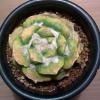
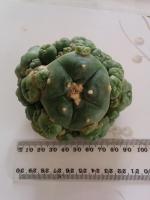
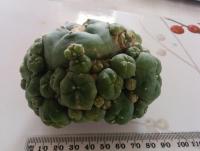
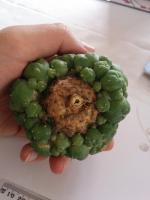
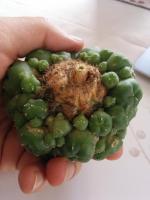
What are the differences between the fruit producing varieties from Hylocereus?
in Cacti & Succulents
Posted
"In Type I self-pollination, pollen is transferred from the anther to the stigma of the same flower. Such flowers are hermaphrodites, which have both sexes.
In Type II pollen is transferred from the anther of one flower to the stigma of another flower from the same plant."
Does anyone know what type of pollination Hylocereus is?
Mmmmm i want to do that. Create some kind of freak